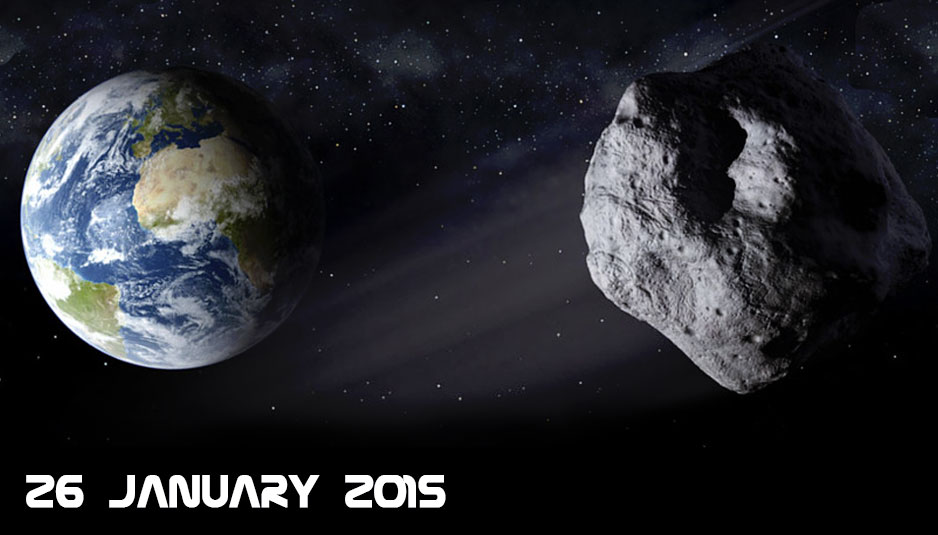Mr. Big (2004 BL86): the asteroid that will skim the Earth
The asteroid 2004 BL86, Monday, January 26, will come to visit us, but without doing damage

NASA
2004 BLB6 is an asteroid with a 500 meters diameter (twice Piazza San Pietro), so he has earned the nickname of Mr. Big, and it is the largest object that will approach the Earth for the next twelve years
“It does not represent a threat to Earth, but it is still a relatively close flyby of a relatively large asteroid, so it is a unique opportunity to observe and find out more about” says Don Yeomans of the Near Earth object Program Office at the Jet Propulsion Laboratory (JPL), a division of NASA in charge to control similar objects. NASA is going to do some analysis by exploiting the Goldstone giant radar antennas, in California and those of Arecibo, Puerto Rico.
“The day after the flyby, when we reach the data, we will be able to extract the first detailed images, know with certainty its size, shape, and something about
90 Antiopethe chemical composition, as far as possible” promises Lance Benner of JPL, who has been entrusted with the task of coordinating the radar observations of BL86 with the antenna of Goldstone, “We do not exclude surprises given that, to date, we don’t know nothing of this asteroid. It would be fascinating to discover that it is a double asteroid”. That may be a double binary asteroid system, is an assumption shared by many. It is an asteroid with satellite whose size is equal to or slightly lower than the first. An example of double asteroid is 90 Antiope, composed of two components of equal size, orbiting a common center of gravity.
The event is not reserved only for the scientists: the size of BL86 in fact are sufficient, given the flyby, to become visible even to the less experienced and enthusiasts amateur thanks to small telescopes or binoculars. The event is not reserved only for the scientists: the size of BL86 in fact are sufficient, given the flyby, to become visible even to the less experienced and amateur enthusiasts thanks to small telescopes or binoculars. The heavenly body will enjoy excellent visibility: its magnitude will be equal to 9 during the closest approach (limiting magnitude for the human eye is 6) making it easy to identify the border between the constellation of the Unicorn and Hydra.
An opportunity that even scientists want miss. “I guess I’ll take the binoculars and we’ll give myself a look,” says Yeomans, “because asteroids have something special. Not only have they brought the building blocks of life on Earth, and most of the water: in the future can become valuable mines for the extraction of minerals and other vital natural resources. And they will be the ‘filling stations’ for humanity in the future voyages of exploration of the solar system. In short, there is something, in asteroids, that makes me want to watch them. ”
oggi.itThe Earth is frequently hit by similar objects: the little ones turn into shooting stars burning up in the atmosphere, while the more massive reach the ground, sometimes with some result, as happened in Chelyabinsk in 2013. The meteor caused 1461 injuries in 1491 in Russian little town, fortunately without causing deaths.
The positive aspect of these events is undoubtedly the scientific research and cultural relevance that may have later: just think that the gold medals awarded at the Sochi Olympic Games on February 15 2014 (in the first anniversary of Chelyabinsk), have been embellished with a small piece of meteorite. But to make rare 2004 BL86 are precisely its size which, in a hypothetical impact could cause a catastrophe.
gazzetta.itSomething similar is scheduled August 7, 2027, when the asteroid 1999 AN10 with diameter estimated to be between 800 and 1800 meters, will race next to the globe at a minimum distance of 390.000 Km, the same one that separates us from the Moon, making it even more unique and spectacular event. The passing of Mr. Big will can be attended live via streaming through the website of the Virtual Telescope.
Edited byAntonio Pio Piazzolla
